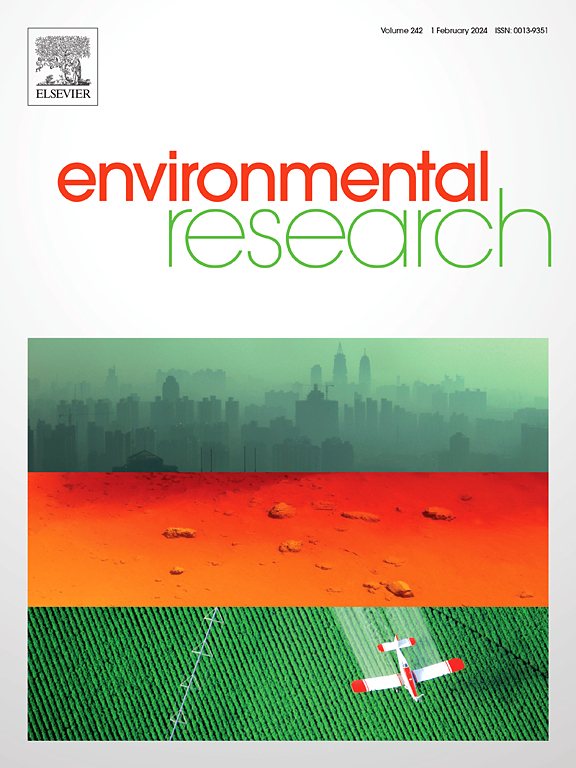基于N掺杂混凝污泥的生物炭通过过氧单硫酸盐活化高效降解盐酸四环素:非自由基途径的见解。
IF 7.7
2区 环境科学与生态学
Q1 ENVIRONMENTAL SCIENCES
引用次数: 0
摘要
混凝可有效去除微塑料。然而,MPs混凝污泥仍然是一种难以降解的危险废物。本研究将掺杂廉价尿素的MPs混凝铝污泥(MP-CA)碳化制备了氮掺杂碳复合材料(N-PSMPC)。与MP-CA直接炭化制备的碳材料(PSMPC)相比,N-PSMPC具有更高的缺陷程度,可以为过氧单硫酸根(PMS)的活化提供更多的活性位点。然后,将N-PSMPC应用于盐酸四环素(TC)的降解。结果表明,N-PSMPC/PMS体系在3 ~ 9的pH范围内表现出优异的TC降解性能,CO32-和HCO3-的共存抑制了TC的降解。此外,石墨N、吡啶N和羰基是主要的催化活性位点。基于液相色谱-质谱联用检测的中间体,推测了三种TC的降解途径,降解机制以非自由基途径为主。此外,通过毒性评价软件对TC和中间体的分析表明,N-PSMPC/PMS体系可以减轻TC的毒性。该研究将为MP-CA的资源化利用提供新的途径,并为水中MPs和TC的去除提供技术支持。本文章由计算机程序翻译,如有差异,请以英文原文为准。

Efficient tetracycline hydrochloride degradation via peroxymonosulfate activation by N doped coagulated sludge based biochar: Insights on the nonradical pathway
Coagulation could effectively remove microplastics (MPs). However, MPs coagulated sludge was still a hazardous waste that is difficult to degrade. Nitrogen-doped carbon composite (N-PSMPC) was prepared by carbonizing MPs coagulated aluminum sludge (MP-CA) doped with cheap urea in this study. Compared with the carbon material (PSMPC) produced by direct carbonization of MP-CA, N-PSMPC had a higher degree of defects, which could provide more active sites for peroxymonosulfate (PMS) activation. And then, the N-PSMPC was applied to the degradation of tetracycline hydrochloride (TC). The results showed that the N-PSMPC/PMS system exhibited excellent TC degradation performance at the pH range of 3–9, and the coexistence of CO32− and HCO3− inhibited the TC degradation. Moreover, the graphite N, pyridine N and carbonyl group were identified as the primary catalytic active sites. Three TC degradation pathways were speculated based on the intermediates detected by liquid chromatography-mass spectrometry, and the degradation mechanism was dominated by the nonradical pathway. In addition, the analysis of TC and intermediates by toxicity assessment software showed that N-PSMPC/PMS system could mitigate the TC toxicity. This study will provide a novel approach for the resourceful utilization of MP-CA and provide technical support for the removal of MPs and TC in water.
求助全文
通过发布文献求助,成功后即可免费获取论文全文。
去求助
来源期刊

Environmental Research
环境科学-公共卫生、环境卫生与职业卫生
CiteScore
12.60
自引率
8.40%
发文量
2480
审稿时长
4.7 months
期刊介绍:
The Environmental Research journal presents a broad range of interdisciplinary research, focused on addressing worldwide environmental concerns and featuring innovative findings. Our publication strives to explore relevant anthropogenic issues across various environmental sectors, showcasing practical applications in real-life settings.
 求助内容:
求助内容: 应助结果提醒方式:
应助结果提醒方式:


